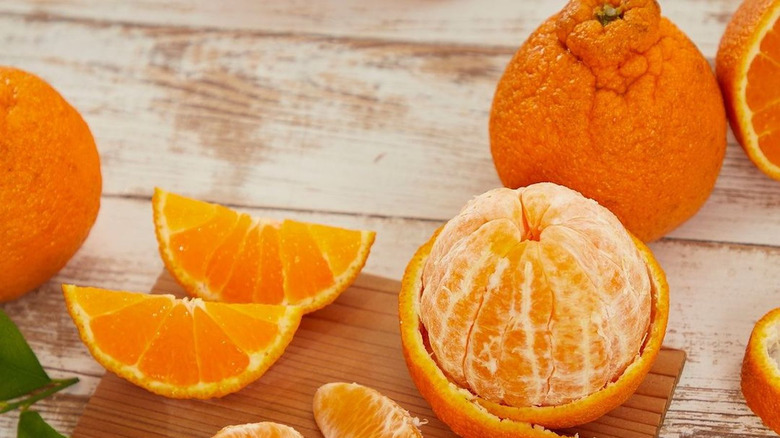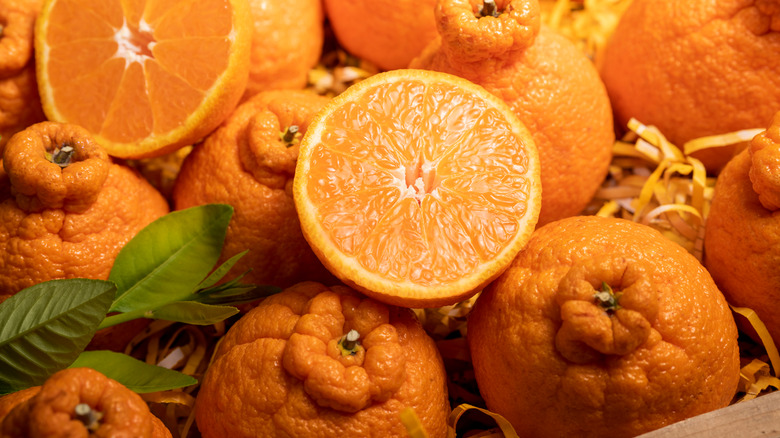The Reason Sumo Citrus Oranges Are So Expensive
They may not be the prettiest fruit in the produce department, but we can attest they are among the most flavorful. We're talking about shiranui, the bumpy, orange-colored, super-sized citrus that shows up in the grocery store for a few months every year. Known widely as Sumo, a nod to branding and its distinctive sumo wrestler-style topknot, they are usually available annually from January through April. Here's what you need to know. Although they look like oranges, Sumos are actually a non-genetically modified hybrid of navel oranges, pomelos (grapefruit-like citrus native to Southeast Asia), and mandarins.
Developed in Japan in the 1970s, Sumos largely flew under the radar until they (legally) hit the market in the United States in 2011 when a long-term effort by California growers to import seedlings finally resulted in a U.S.-grown crop. For decades prior, the U.S. government had blocked the fruit from being imported citing concerns about inadvertently opening the door to potentially damaging plant-borne diseases that could affect other U.S. crops.
And that was just the beginning. Although California farmers began growing Sumo citrus from those imported seedlings in 1998, it was more than a decade before the first U.S.-grown crop was ready for market — and even then, the harvest was so small it didn't make it beyond California, selling mostly at high-end markets and Asian specialty stores.
A long time coming
As word of the super-sweet citrus spread, more growers wanted in on the game, but starting from scratch, they were looking at another seven years before their first harvest. If you've been paying attention, you've probably noticed the burgeoning presence of the quirky orange citrus with its signature Sumo-like topknot since about, say, 2018. And you've also probably noticed they're more expensive than other orange citrus, scanning in at up to $5 per pound versus an average of about $1.49 a pound for navel oranges. But why?
If you haven't experienced Sumos' swoon-worthy sweetness, you're probably puzzled by the price differential, but there's more to it than taste alone. The thing is, the fruit may look tough and it may be named after fierce Japanese wrestlers, but Sumos are actually pretty delicate. Sumo trees require more pruning than other citrus trees because each individual piece of fruit needs access to sunlight in order to thrive and reach its peak sweetness. But not too much sun.
"The trees are hand-pruned and trimmed," Sunnia Gull, director of brand management at AC Brands, the company that owns the Sumo brand, told CNN in 2021. "The skin of the Sumo citrus is actually so delicate that there's this sort of clay that is put on, a sunscreen, over the summer ... We're talking about every piece of fruit."
It's a labor-intensive process. We're guessing that's why Sumo citrus is sometimes called the world's most pampered fruit.

